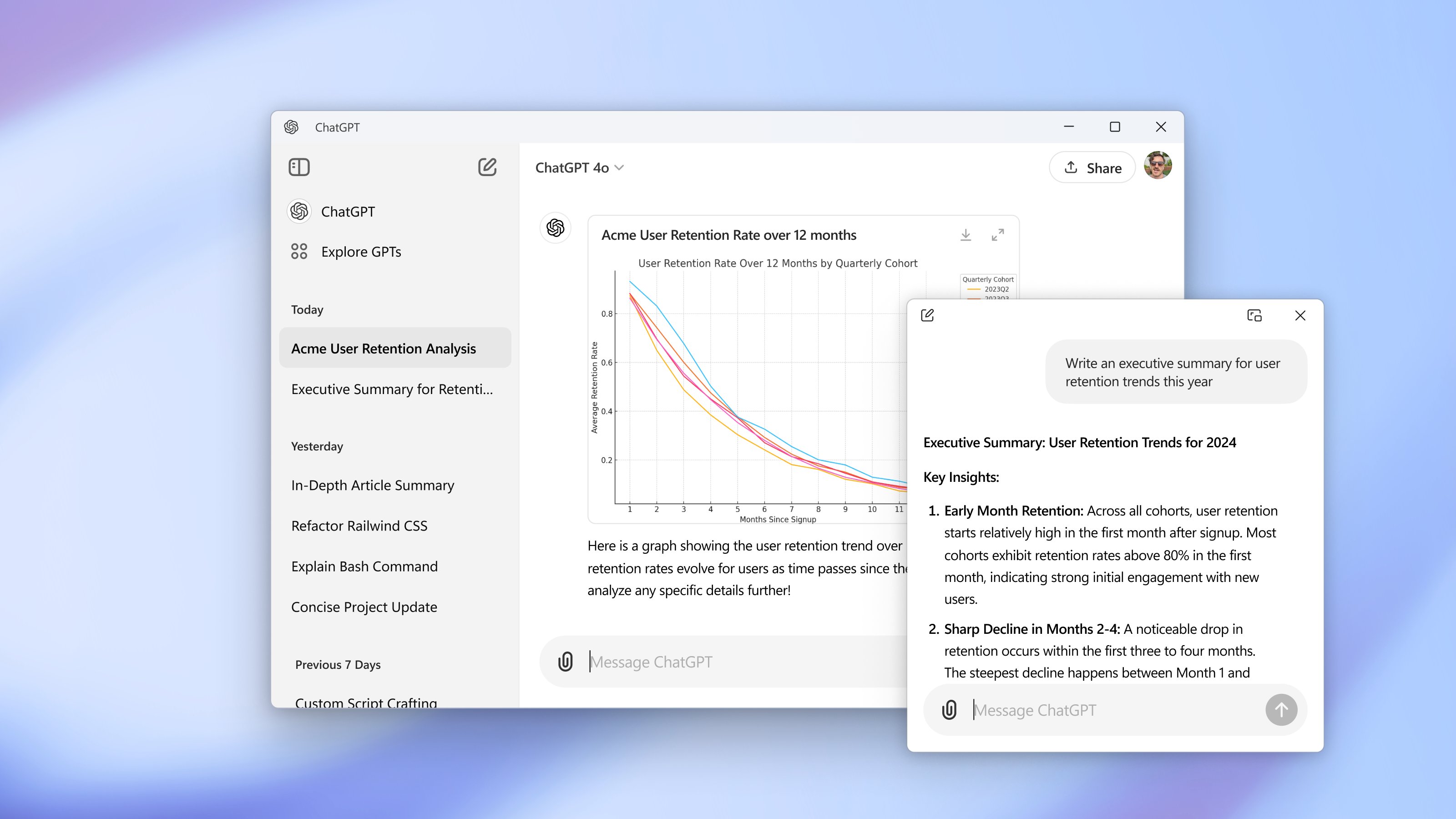4 things you can do in the ChatGPT Windows app that it does better than Copilot
Who needs Microsoft now?

Now that ChatGPT has its own Windows app, the question of whether it's worth picking over Microsoft’s Copilot, which is already threaded throughout Windows 11, is front and center.
With the two sharing the stage, you should learn where ChatGPT shines versus Copilot. So, we've assembled four reasons why you might prefer the ChatGPT app on Windows and where it stands out.
Instant Access with Alt + Space
Speedy access to a tool is always a major selling point, which is why Copilot's native home on Windows is appealing. But, with the ChatGPT app, you just have to press Alt + Space to open a chat window instantly. That's true regardless of what you're already doing or if you're juggling a bunch of other tasks.
Imagine you’re writing a document and want to ask AI for help improving your word choice or checking the grammar. You don't need to open the Copilot app; just press Alt + Space, type your query, and get an answer. Copilot often requires opening an app; even with a single button to open it, it still feels a little slower than the ChatGPT app.
Accessing Chat History Across Devices
As someone who uses multiple devices that don't all use Microsoft operating systems, the most obvious benefit of the ChatGPT app is that it syncs my account and chat history to the web portal, my mobile app, and anywhere else I use ChatGPT. If I am using ChatGPT on my desktop computer with the Windows app and want to continue the conversation while taking the train, I can pull the conversation up and keep going, and vice versa, once I return home.
On the other hand, Copilot is pretty integrated into Microsoft 365, which is fantastic for staying within Word or Excel but doesn’t let me carry a conversation from my desktop to my mobile. So, if I ask Copilot to help brainstorm some ideas for a party, I'll need to wait until I'm on another Windows device before I can continue the conversation. ChatGPT's ability to stay connected across devices makes a big difference if you work on the go and want to keep all your AI conversations contained in one platform.
Image Analysis for Visual Projects
One of the best ChatGPT features is its ability to analyze images you upload. Drop in a photo, and the AI will interpret what’s going on in the image – something Copilot doesn’t currently offer.
I've regularly used this feature on the mobile app with complex charts or multiple seemingly contradictory parking signs on a street post, even with recipe photos to work out the ingredients. This kind of image-based assistance isn’t part of Copilot’s toolkit yet, so when visuals are all you have, and words aren’t enough, ChatGPT is the go-to option.
Plugin and GPT Store Access (Coming Soon)
This is still more anticipation than actual reality, but the ChatGPT app for Windows will get access to OpenAI's GPT Store along with the plugins built by other companies to work with the AI chatbot. That means more customization and new ways to use the AI chatbot are on the horizon. For instance, you might link a content calendar plugin to ChatGPT to get its responses and other specialized tools.
Copilot is great for how it blends with Microsoft's apps, but it otherwise doesn't have the kind of flexibility provided by the GPT Store (albeit still speculatively for now). So, while both the ChatGPT Windows app and the built-in Copilot provide Windows users with many AI tools and features, ChatGPT has enough unique perks to make it more enticing in many cases. That could certainly change as Microsoft continues to improve Copilot, but I suspect you'll see a spike in Windows ChatGPT usage and a drop in Copilot for the foreseeable future.
You might also like...
Get daily insight, inspiration and deals in your inbox
Sign up for breaking news, reviews, opinion, top tech deals, and more.

Eric Hal Schwartz is a freelance writer for TechRadar with more than 15 years of experience covering the intersection of the world and technology. For the last five years, he served as head writer for Voicebot.ai and was on the leading edge of reporting on generative AI and large language models. He's since become an expert on the products of generative AI models, such as OpenAI’s ChatGPT, Anthropic’s Claude, Google Gemini, and every other synthetic media tool. His experience runs the gamut of media, including print, digital, broadcast, and live events. Now, he's continuing to tell the stories people want and need to hear about the rapidly evolving AI space and its impact on their lives. Eric is based in New York City.